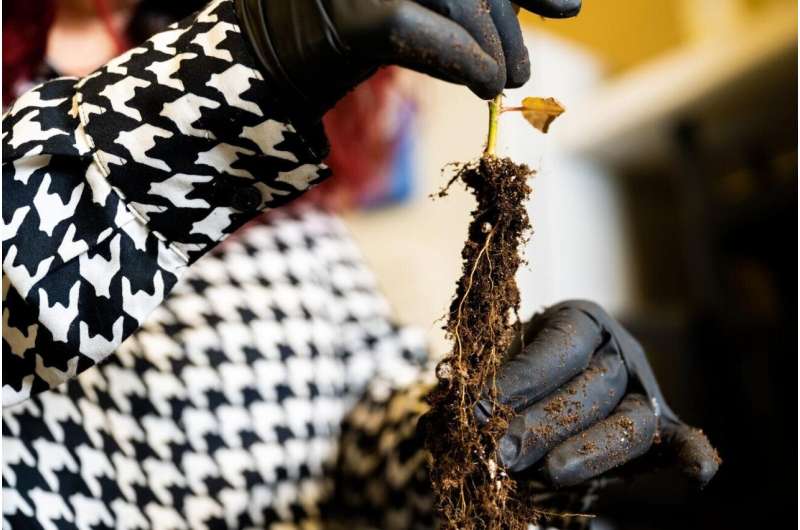This article has been reviewed according to Science X's editorial process and policies. Editors have highlighted the following attributes while ensuring the content's credibility:
fact-checked
trusted source
proofread
Fine roots make the difference in metabolomes and microbiomes

Bacteria and fungi live together on the surface of plant roots, which can promote symbiotic interactions with the plant. Plant roots that are especially fine can support various niches for their microbial proliferations, but traditionally, microbiome studies have not examined fine root systems separately from the rhizosphere.
Findings, now published in Plant, Cell & Environment, show that the microbiomes in the root surface zone and rhizosphere are distinctive in four different tree species. Results also exhibited differences between the bacterial rhizoplane and rhizosphere compartments for absorptive fine roots, but not transportive fine roots.
Deciphering host-microbial relationships requires an intricate understanding of the physiology and morphology of the host—in this case, plant roots. Classification of fine roots is important for assessing various ecological processes, including fine-scale biogeochemical cycling and root-microbial relationships.
Results of this study show that various root compartments are differentially structured by root functional type and available resources. Furthermore, the findings provide evidence that microbial composition is spatially structured according to root functional type, and that there are selective pressures for each root compartment for different root functional types.
These data emphasize the need to scrutinize root physiology when examining root-microbial feedback because there is more information than previously recognized within individual or homogenized root compartments.
Microbiome clusters in plant roots play critical, interactive roles with the plant, or host. But in microbiome studies, researchers rarely focus on fine roots—2 millimeters or less—and their different functional roles.
Using a 26-year-old common garden forest, a multi-institutional team of researchers collected fine root samples from four temperate tree species (three deciduous and one coniferous) that varied in their morphology.
Through gene sequencing, as well as metabolomic analysis at the Environmental Molecular Sciences Laboratory, researchers observed that fine roots compartmentalize functions, and within these compartments, bacteria and fungi function differently. This is likely due to whether and how nutritional resources are available in each compartment.
Additionally, researchers observed differences in data from rhizoplanes versus rhizospheres. Bacteria in the rhizoplanes—the root surface and immediately surrounding soil particles—as well as the root metabolome and potential microbial functions, differed between absorptive and transportive fine roots. But bacteria in the rhizosphere—the biogeochemical soil in the roots' vicinity—did not change.
These findings show the importance of root function when examining root-microbial relationships, emphasizing different host-selective pressures imparted on different root microbiome compartments.
More information: William L. King et al, Functionally discrete fine roots differ in microbial assembly, microbial functional potential, and produced metabolites, Plant, Cell & Environment (2023). DOI: 10.1111/pce.14705
Provided by Environmental Molecular Sciences Laboratory




















